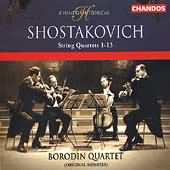Random Noise 12


Random Noise 12
Pomposity
I used to get a kick out of Art Dudley’s Stereophile column before he turned to speaker restoration, vinyl implementation and similar DIY involvements. While I’ve long considered him one of our hobby’s most entertaining writers, his interests dwell a distance from mine, and so I left off. And then, to my delight, in the October, 2008 issue, the man restored my faith.
Dudley has at pomposity, and not a moment too soon. Among us audio journalists, it’s a bloody plague. When, for (Dudley’s) example, a writer calls his main or only sound rig his reference system, we’re dealing with acute, seriously nerdy egomania. I get the picture of a guy walking around his digs in a lab coat. Frowning. With a clip board under his arm. (I’m sure that if I went back over my audio scribblings, I’d find “reference system” nestling in at least a few paragraphs. I apologize. It’s a cheesy, self-aggrandizing usage I’ll never revert to again, and thank you, Art, for raising my awareness.) High-end audio manufacturers like to apply the term to those components compared to which all else pales, but really, dear hearts, the word’s a weary cliché, thus largely without impact except when prefaced by a dollar sign.
I’d like to see another term turned out to pasture: monoblock, or worse, monobloc. This high-falutin pretension probably came into prominence when mono amps tended to be bigger than cinderblocks, as some still are. But the times they are a-changin’. My own wee pair would be better characterized as mono-billfolds, which does not much exaggerate their diminutive size. If you’re wondering, the tiny mites in question are NuForce Reference (oops!) 9 SE V2’s. Also, yes, I work for NuForce. Also, yes, life’s too goddam short to live with shabby sound. They’re great amps.
To remain with the reviewing dodge, some of us excel at describing sonic properties in engagingly colorful terms. Whether this language captures what you or I might call the truth – that most elusive of qualities – is a matter of trust. We’re not in the reviewer’s sound room, nor do we listen with his expectations or sensibilities. A writer like Harry Pearson has a way with description that touches on genius. I know of no one more persuasive. But, again, trust. This goes back a number of years. HP recommended a sonic blockbuster so shrill I could not play it through. You’re thinking, hey, maybe the problem lay with your then reference – double oops! – system. Anything’s possible.
I’d like to add another gripe. Length. And I’m not talking about penile enhancement. More than a few of us go on forever, particularly on the Internet, where ink and paper are free. As you hack your way toward what you hope is a clearing, or better still, the beach where rescuers await your arrival, you get the feeling we’re paid by the word. The weather turns particularly heavy when colleague Gasbag gets into the recordings that helped him to arrive at his conclusions. (Pedagogical aside: as to the “his” of “his conclusions,” with respect to a gender-neutral, unnamed third person, he, him, and his have traditionally sufficed for both sexes. In the interests of gender equality, the third-person plural – they, their, etc. – operates as a convenient if inaccurate substitute. Be that as it may, in audio, men outnumber women. In crewel embroidery the reverse obtains. That’s a guess. I haven’t checked.)
With respect to musical genres, my interests are limited, which is perhaps why I don’t recognize much of the music or many of the performers colleague Gasbag discusses. But really, couldn’t a judicious dollop of generalization substitute for a mind-numbing discourse on the palpability of Gunnar Fong’s ukulele solo in “My Germs Caught You by the Short and Curlies”? Either the review item does well at creating lifelike sounds or it doesn’t. Or it emphasizes this at the expense of that. Or…. Anyway, I could settle for the Fong bit were it not followed by so many more. Please, nurse, I need that drink…!
Dudley makes the point that audiophile labels are often disappointing. In my experience, aesthetically, almost always. A fine, well-meaning fellow of my acquaintance founded a since departed label so sensitive to audiophile requirements that he issued the same performance in conventional CD foil and gold. Need I tell you that the gold was said to sound better? I had trouble discerning a difference. The performances, not. He contracted with a Russian orchestra and its young conductor for several productions, one of which features Rodion Shchedrin’s Carmen Suite, based on numbers from Bizet’s opera slathered in pizzazz. Sound to die for, otherwise boring. The conductor simply hadn’t the knack. (It’s an entertaining work. If you’re interested, I recommend Mikhail Pletnev conducting the Russian National Orchestra on Deutsche Grammophon 269 471 136-2, issued in 2001.) As I recall, another of the audiophile label’s Russian releases offered one of Alfred Schnittke’s lighter works, (was it the Gogol Suite?) for which the conductor had neither feeling nor understanding.
Matters degrade yet further when uninteresting music is presented in less than good sound. Audiophile, my ass. The term perhaps had validity when pressings made a difference. Let’s move on.
Making amends
In Random Noise 11 I wrote (again) about John Eliot Gardiner’s Bach-cantata series with vocal soloists, the English Baroque Soloists and Monteverdi Choir on the Soli Deo Gloria label. In my remarks I mentioned two single-disc sets, volumes 14 and 15, of music for the Christmas season recorded in a Manhattan landmark, St. Bartholomew’s. These New York Christmas recordings culminated a Bach Cantata Pilgrimage of churches, chapels, etc., in Great Britain and the Continent. Seems I overlooked a third single-disc release, volume 16, of the St. Bart’s set, recorded at the end of 2000 and released in ’07.
 I also overlooked volume 6, a two-disc set (as are most of these SDG releases), also issued in ’07, “For the Twelfth [and Thirteenth Sundays] after Trinity,” recorded (CD 1) in the Jacobskirche, Köthen, and (CD 2) the Dreiköningskirche, Frankfurt. It’s just about impossible to listen to any of these cantatas without encountering moments of true sublimity.
I also overlooked volume 6, a two-disc set (as are most of these SDG releases), also issued in ’07, “For the Twelfth [and Thirteenth Sundays] after Trinity,” recorded (CD 1) in the Jacobskirche, Köthen, and (CD 2) the Dreiköningskirche, Frankfurt. It’s just about impossible to listen to any of these cantatas without encountering moments of true sublimity.  From what we know of Bach, there’s little question about the depth and sincerity of his religious faith. And yet having to produce hundreds of cantatas (a great many of which are lost) surely must have been a grind. But then, as one jewel among many, we come across BWV 33, Allein zu dir, Herr Jesu Christ, with its stunningly beautiful aria for alto, (CD 2, track 15), and you sit there with your mouth agape. And I haven’t even mentioned the luxuriant trumpets and drums of BWV 69a, Lobe den Herrn, meine Seele (CD 1). The releases are listed as SDG 134 (the single) and 137 (the two-disc set).
From what we know of Bach, there’s little question about the depth and sincerity of his religious faith. And yet having to produce hundreds of cantatas (a great many of which are lost) surely must have been a grind. But then, as one jewel among many, we come across BWV 33, Allein zu dir, Herr Jesu Christ, with its stunningly beautiful aria for alto, (CD 2, track 15), and you sit there with your mouth agape. And I haven’t even mentioned the luxuriant trumpets and drums of BWV 69a, Lobe den Herrn, meine Seele (CD 1). The releases are listed as SDG 134 (the single) and 137 (the two-disc set).
More good stuff
 Dmitri Shostakovich (1906-1975) wrote two cello concertos, opp. 107 and 126, for the late Mstislav Rostropovitch, one of the finest cellists of his age, and as no less significant to the state of art music’s health and vitality, a man who, in addition to a long and rewarding relationship with Shostakovich, commissioned or received commissions from a number of composers. Wikipedia mentions Sergei Prokofiev, Benjamin Britten, Henri Dutilleux, Leonard Bernstein, Alfred Schnittke, Aram Khachaturian, Astor Piazzola, Olivier Messiaen, Witold Lutosławski, Krzysztof Penderecki, Sofia Gubardulina, and Arthur Bliss. “His commissions of new works enlarged the cello repertoire more than any cellist before or since.” And that’s a fact.
Dmitri Shostakovich (1906-1975) wrote two cello concertos, opp. 107 and 126, for the late Mstislav Rostropovitch, one of the finest cellists of his age, and as no less significant to the state of art music’s health and vitality, a man who, in addition to a long and rewarding relationship with Shostakovich, commissioned or received commissions from a number of composers. Wikipedia mentions Sergei Prokofiev, Benjamin Britten, Henri Dutilleux, Leonard Bernstein, Alfred Schnittke, Aram Khachaturian, Astor Piazzola, Olivier Messiaen, Witold Lutosławski, Krzysztof Penderecki, Sofia Gubardulina, and Arthur Bliss. “His commissions of new works enlarged the cello repertoire more than any cellist before or since.” And that’s a fact.
A Phoenix Edition CD, an Austrian label distributed in the US by Naxos of America, features a young cellist, Dimitri Maslennikov, with the NDR (North German Radio) Symphony Orchestra under Christoph Eschenbach’s direction. In addition to conducting, Eschenbach made his mark as a world-class pianist. The music broods in the best Shostakovian manner, and when it grins, it’s through clenched teeth. If you want a sense, as great art, of what life under Stalin was like, have a listen, but perhaps not to this release (Phoenix Edition 128). While the engineering is exceptionally fine –– the performances sound closer to live than canned –– the cellist’s far too polite. Check out arkivmusic.com for available Rostropovitch performances of the two concertos. (The first is the better known.)
If the music’s to your liking, I recommend your looking into the string quartets. They’re among their century’s best. And for this I’d recommend Chandos Historical CHAN 10064(4), with the original members of the Borodin Quartet performing quartets one to thirteen. Chandos is unnecessarily coy about recording dates. Shostakovitch composed the thirteenth in 1970. These sessions took place before the composer penned his remaining two. The set’s available at ArkivMusic.com.
Difficult to guess how many of the six or seven classical buffs reading this I’ll shock, but what the hell, caution to the wind, devil take the hindmost, helter-skelter, hell for leather, cats and dogs. I cannot sit through a Bruckner symphony. The music’s coyly coital, bombastic rhetoric forever falls short of ejaculation. (“Ejaculate” is to achieve male orgasm, yes, but it also means “to blurt out.”) Going nowhere, the heavy breathing builds and collapses. In the world of Teutonic grandiosity, Mahler is a more engaging and inventive composer, but here too, with the symphonies, histrionic self-involvement oftimes proves much of a muchness. Before you succumb to apoplexy, bear in mind that you’re reading the opinions of one insignificant scribe. If they gave a damn, Bruckner and Mahler’s spirits would already be planning to piss on my grave.
 The abovementioned insignificant scribe hears Mahler’s songs with orchestra as a different matter entirely, with Das Lied von der Erde as a favorite among favorites. Notable recordings abound: Bruno Walter conducting the Vienna Philharmonic, with the great British contralto Kathleen Ferrier and tenor Julius Patzak, released in 1952. I have a later Walter recording in stereo (1963), with mezzo Mildred Miller, tenor Ernst Haefliger, and the NY Phil (Sony Classics SMK 64455), and another I treasure, Otto Klemperer’s reading with the Philharmonia Orchestra and New Philharmonia Orchestra, with mezzo Christa Ludwig and tenor Fritz Wunderlich, recorded over the course of a few years (’64 and again in ’66 / EMI 5 66944). My favorite modern recording, and perhaps my favorite, period, is Boulez’ 1999 reading, issued in ’01, with the Vienna Philharmonic, mezzo Fioleta Urmana and tenor Michael Schade (Deutsche Grammophon 289 469 526-2). Quite apart from, in this context, a refreshing French sensibility, Boulez brings a signature lucidity to the score. Indeed that’s the one quality that informs the best of his recordings.
The abovementioned insignificant scribe hears Mahler’s songs with orchestra as a different matter entirely, with Das Lied von der Erde as a favorite among favorites. Notable recordings abound: Bruno Walter conducting the Vienna Philharmonic, with the great British contralto Kathleen Ferrier and tenor Julius Patzak, released in 1952. I have a later Walter recording in stereo (1963), with mezzo Mildred Miller, tenor Ernst Haefliger, and the NY Phil (Sony Classics SMK 64455), and another I treasure, Otto Klemperer’s reading with the Philharmonia Orchestra and New Philharmonia Orchestra, with mezzo Christa Ludwig and tenor Fritz Wunderlich, recorded over the course of a few years (’64 and again in ’66 / EMI 5 66944). My favorite modern recording, and perhaps my favorite, period, is Boulez’ 1999 reading, issued in ’01, with the Vienna Philharmonic, mezzo Fioleta Urmana and tenor Michael Schade (Deutsche Grammophon 289 469 526-2). Quite apart from, in this context, a refreshing French sensibility, Boulez brings a signature lucidity to the score. Indeed that’s the one quality that informs the best of his recordings.
I have a few others as well, to which, as our immediate subject, I’ve added a hybrid SACD – Das Lied’s first? – with Michael Tilson Thomas conducting the San Francisco Symphony, tenor Stuart Skelton, and baritone Thomas Hampson. The production appears on the orchestra’s own label (San Francisco Symphony 821936-0199-2). Enough for the purpose of these remarks to report that, as one might expect, the performances are excellent. It’s the disc’s hybrid aspect that calls for comment. The multi-channel SACD iteration is probably a delight. Mine is a CD-only system on which the two-channel mix sounds pretty good. I recommend the release on faith to those of you with multi-channel rigs. For you old-timey stereo holdouts, go for the Boulez.
Cheers.

![]()
Don’t forget to bookmark us! (CTRL-SHFT-D)
Stereo Times Masthead
Publisher/Founder
Clement Perry
Editor
Dave Thomas
Senior Editors
Frank Alles, Mike Girardi, Key Kim, Russell Lichter, Terry London, Moreno Mitchell, Paul Szabady, Bill Wells, Mike Wright, Stephen Yan, and Rob Dockery
Current Contributors
David Abramson, Tim Barrall, Dave Allison, Ron Cook, Lewis Dardick, Dan Secula, Don Shaulis, Greg Simmons, Eric Teh, Greg Voth, Richard Willie, Ed Van Winkle, and Rob Dockery
Music Reviewers:
Carlos Sanchez, John Jonczyk, John Sprung and Russell Lichter
Site Management Clement Perry
Ad Designer: Martin Perry





Be the first to comment on: Random Noise 12